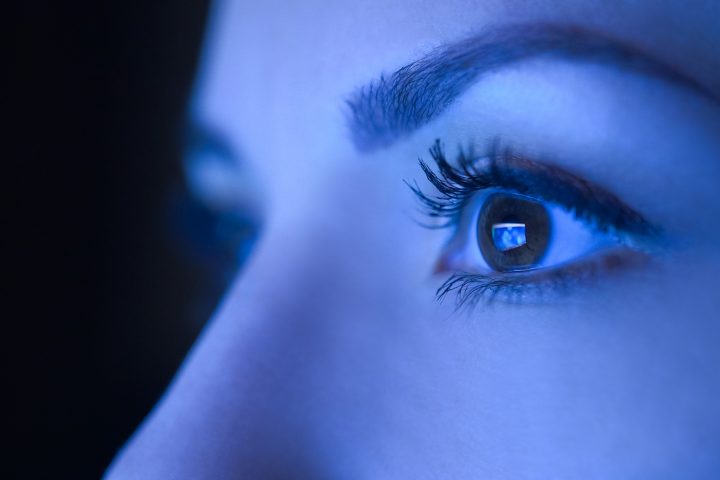
There is a lot of hype around the negative impact of HEV also known as ‘Blue light’. Before you buy your blue light glasses or don a ski mask in front of your computer screen, let’s read up on the facts.
What is blue light/ High Energy Visible (HEV) light?
In terms of geek-speak, High Energy Visible (HEV) light refers to the higher-frequency, shorter wavelengths of light in the violet-blue band of the visible light spectrum (380-500nm). Most blue light comes from the sun and constitutes between 25-20% of the light generated from the sun. HEV is also emitted from TV’s, laptops, desktops, certain light sources (particularly LED’s) and smartphones.
The science
Scientific evidence points to the conclusion that HEV light does harm our skin cells. Just like UVA and UVB causes free radical damage, so too does blue light. Furthermore, blue light has been linked to direct damage to the mitochondria, the ‘mini organs’ in our cells that provide all the energy we need to perform every function in our bodies.
A recent study looked at the effect of HEV exposure on the genes in our skin. The study concluded that HEV directly impacts our natural response to inflammation and reduces our ability to repair and heal the skin barrier. Blue light also alters normal melanin production and may help to explain why some individuals with melasma still suffer with hyperpigmentation despite using high levels of sunscreen which provides UVA and UVB protection but no HEV protection.
So, is ‘screen face’ really a thing and do we really need to freak out about our TV’s, tablets and smart phones? A 2018 study showed that exposure of up to one hour on a device emitting blue light can cause free radical damage in cells. However, there are no studies to date reporting on the long-term effects of blue light from devices on our skin.
The bottom line
My recommendation as a scientist is to minimise your total daily exposure to HEV, particularly the natural blue light from solar radiation. The amount of HEV emitted by devices is only a fraction of the intensity of the HEV light emitted from the sun but the jury is still out on just how damaging devices are on our skin and eyes. You will need to be in front of your smartphone for ten hours to equal fifteen minutes of blue light exposure from the sun! If you are constantly looking at screens every day, it can’t hurt to add some blue light protection to your skincare routine, but if you spend time outdoors, you definitely need to protect from the four damaging wavelengths: UVA, UVB, HEV and infrared (IR).
So, what can we do to protect against HEV damage to skin? Thankfully there are a few powerful ingredients able to protect the skin.
1/ Mineral makeup containing iron oxides
A few years ago, I was speaking at Australasian Academy of Cosmetic Dermatology on the benefits on mineral makeup. I was referring to the iron oxide content of mineral makeup and the protective benefits of iron oxides (at over 4% dosage) to filter and prevent penetration of blue light. I was inundated after my presentation as so many dermatologists wanted to recommend skin care and makeup for their patients with melasma and other forms of hyperpigmentation.
2/ Skincare offering HEV protection
Antioxidants are the key here as they neutralise free radical damage generated from blue light interacting with our skin cells. Look for products containing green tea, vitamin C and lycopene. Lycopene from tomatoes, is my number one favourite blue light ninja because it actually filters blue light wavelength as well as neutralising free radicals that damage and age our skin.
Sorry to sound like your mum, but it all comes down to moderation. Blue light in controlled doses can help with acne treatments and other skin disorders. Blue light also helps us be more alert and can help elevate your mood. But with millennials picking up their smartphones over 150 times a day, it is definitely worth minimising daily exposure to blue light and protect your skin and eyes if you are exposed to solar radiation.
